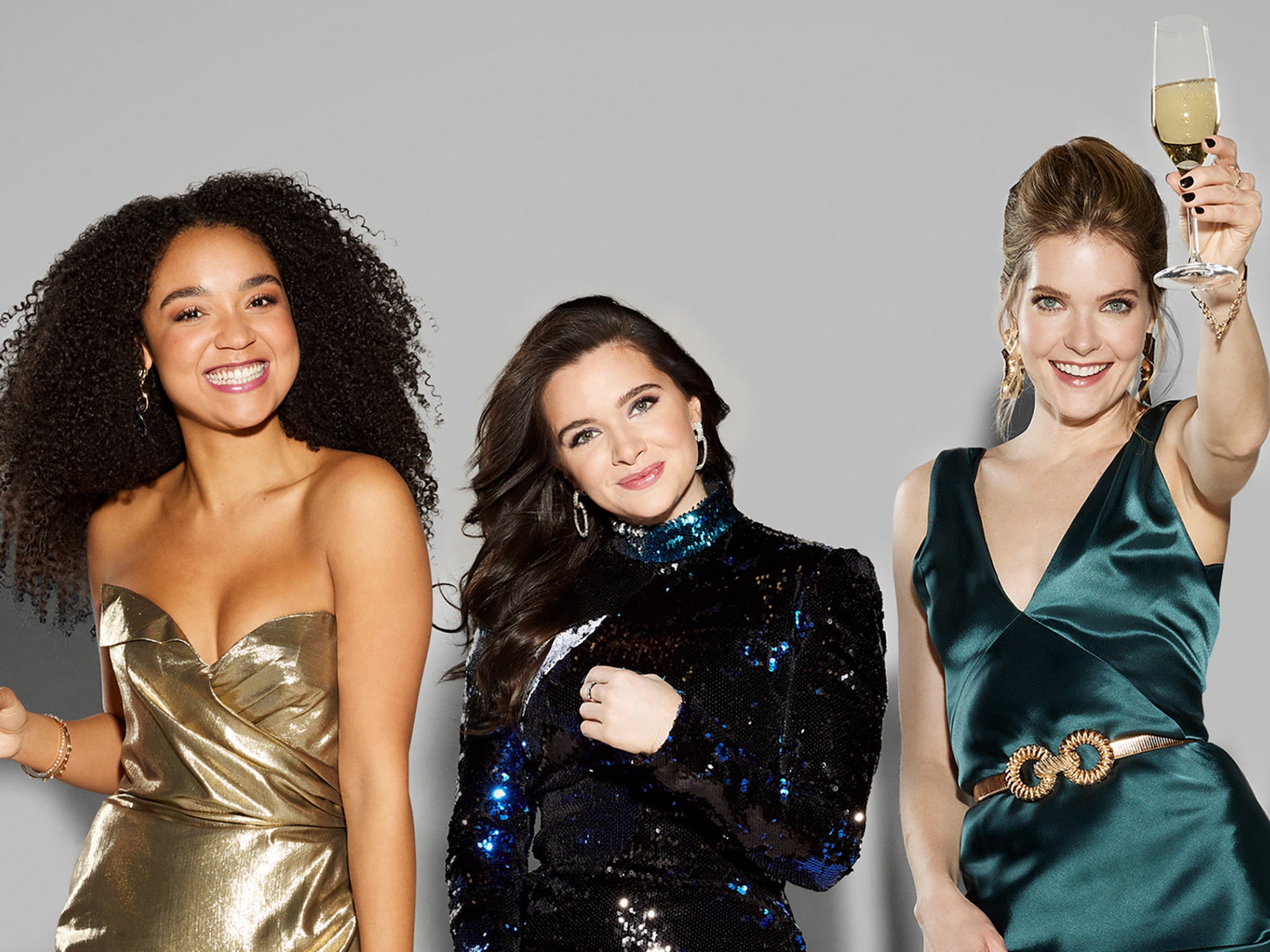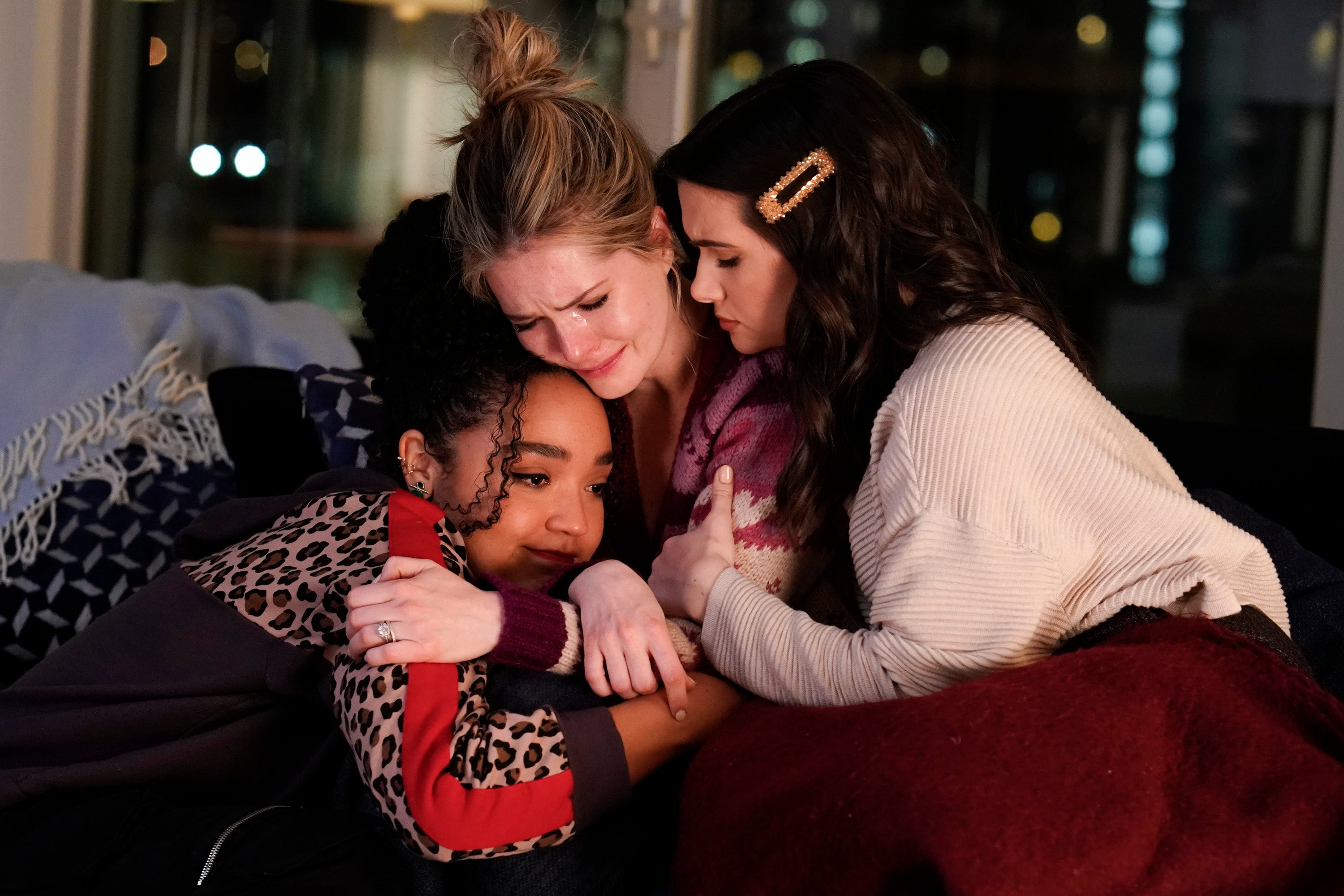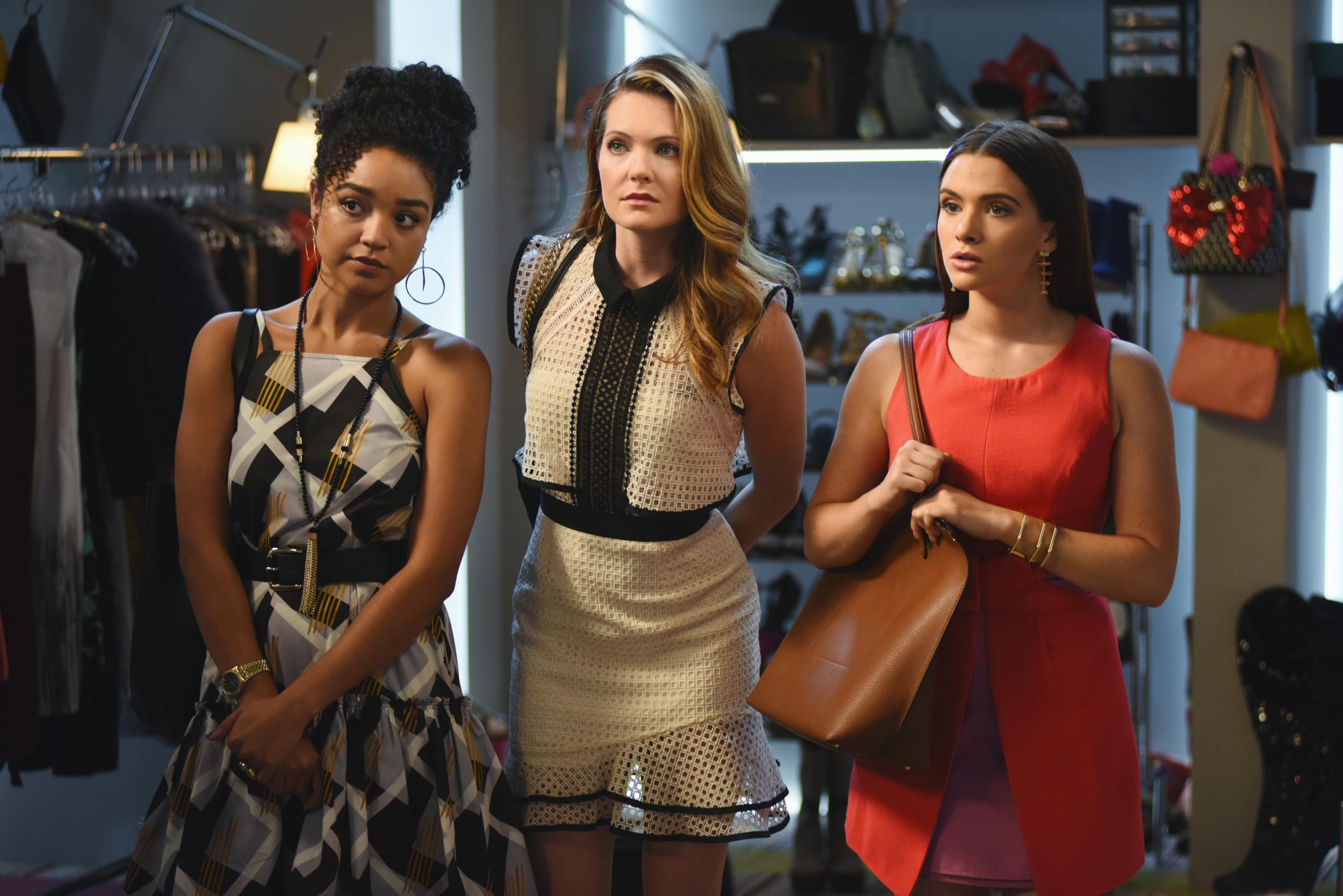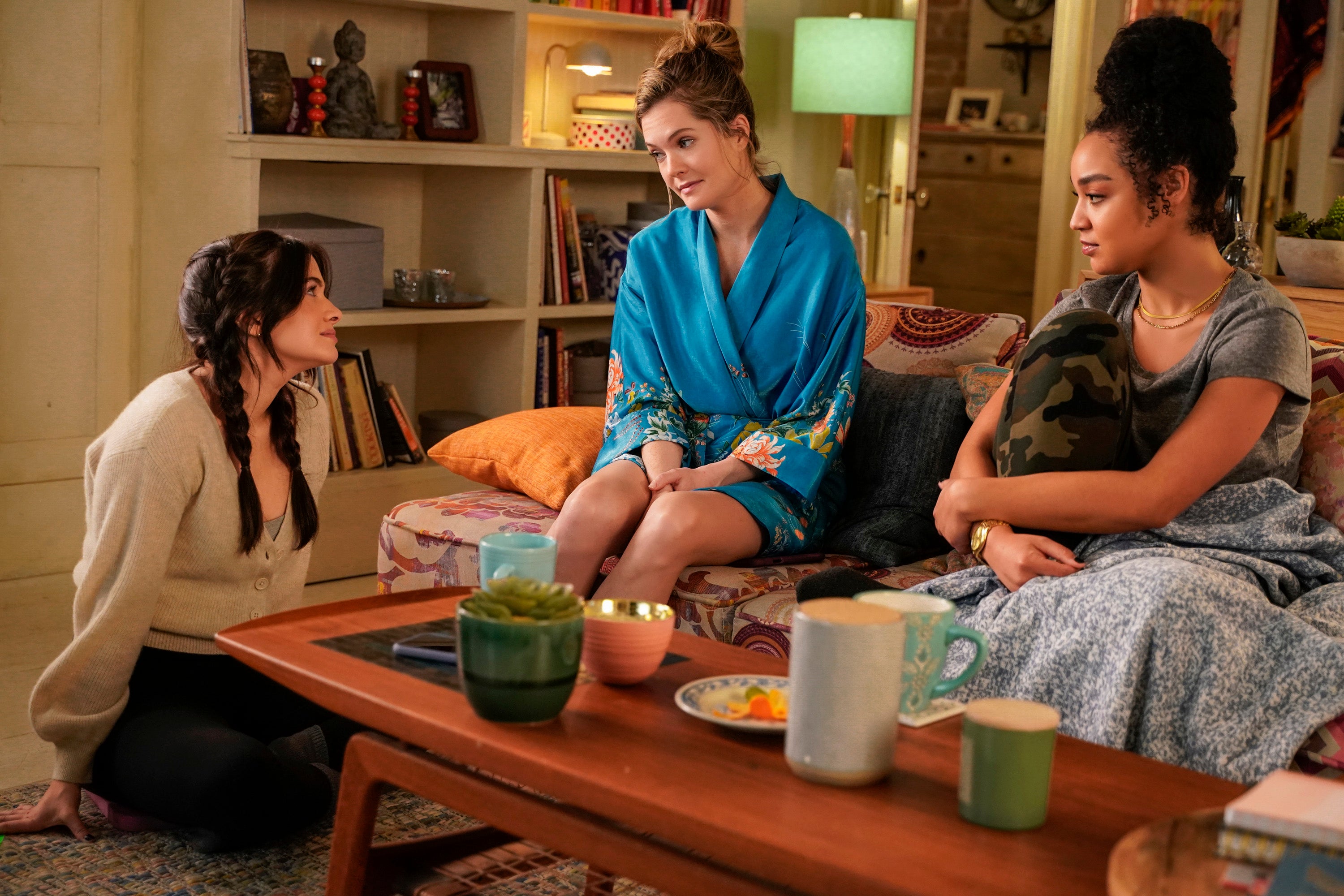‘We had our finger on the pulse’: The glitz, glamour and radical politics of The Bold Type
The comedy-drama series about three millennials at a women’s magazine examines some of the most poignant issues affecting young women today. As the show comes to an end after five seasons, Olivia Petter speaks to its creator, producer and stars


Your support helps us to tell the story
From reproductive rights to climate change to Big Tech, The Independent is on the ground when the story is developing. Whether it's investigating the financials of Elon Musk's pro-Trump PAC or producing our latest documentary, 'The A Word', which shines a light on the American women fighting for reproductive rights, we know how important it is to parse out the facts from the messaging.
At such a critical moment in US history, we need reporters on the ground. Your donation allows us to keep sending journalists to speak to both sides of the story.
The Independent is trusted by Americans across the entire political spectrum. And unlike many other quality news outlets, we choose not to lock Americans out of our reporting and analysis with paywalls. We believe quality journalism should be available to everyone, paid for by those who can afford it.
Your support makes all the difference.One evening, Cosmopolitan editor-in-chief Joanna Coles was angry. It was 2014 and she had just found out that Katy Perry had posted her embargoed cover shoot on Instagram. “It was the one thing we’d asked of her – and she promised she wouldn’t post anything,” Coles recalls. Perry had 80 million followers at the time and with one click she had rendered the actual cover obsolete. “We knew that our cover would look like a two-month-old picture, which would cost me directly in sales,” says Coles. “I was spitting mad.”
A few hours later, Coles arrived in West Hollywood for a meal with friends, the rage still visceral. The man sitting next to her asked what was wrong. “I explained everything, and he said my life sounded like a good TV show.” That man was a producer named David Bernad – and he was right. The Bold Type was born.
Inspired by Coles’ time at Cosmopolitan, The Bold Type is a comedy-drama series about three millennial women working at Scarlet magazine – a progressive, digitally savvy title that runs features on everything from rising female politicians to how to stalk your ex-boyfriend without social media. Watch one episode of the show – with its glitz and glamour, its lavish launch parties and fashion shows in Paris – and you’d be forgiven for thinking that it’s fantastical fluff. But scratch away at its shiny, lacquered surface and you’ll find a series that examines some of the most poignant issues affecting young women today. Sexual assault, racism, transphobia, class, fertility, and even gun control are handled delicately, explored with a nuance that is fleetingly rare in TV.
At its heart, though, The Bold Type is a celebration of female friendship, its relationships the antithesis of the toxic ones in Girls – another New York City-based show about a group of young women. In Lena Dunham’s series, female friendship is derided, criticised and exposed as shallow. It’s a bleak point of view, made far bleaker when considered alongside its predecessor, Sex and the City, a show so famous for the in-fighting of its female cast, its stars are still asked about it in interviews 17 years since it stopped airing. The Bold Type excels because the opposite is true.
The initial reviews of The Bold Type were glowing – Vulture called it “TV’s best surprise of 2017 so far” when the show first aired, while Variety described it as “fresh and energetic” – and they have largely remained so throughout the show’s five-year run. It had fans from the start, but when it landed on Netflix in the UK at the start of this year, right in the midst of lockdown, its viewership exploded.
On the Scarlet masthead are Jane Sloan (Katie Stevens), the whip-smart journalist with shades of Teen Vogue’s Lauren Duca circa 2016; Kat Edison (Aisha Dee), the spirited social media director-slash-activist; and Sutton Brady (Meghann Fahy), the aspiring stylist who’s having an affair with an older, and much more senior, colleague.
Over the course of five seasons – the show ended in the US in June, though its final season is yet to have a UK release date – these three women navigate typical twentysomething hurdles. Break-ups, career pivots and general angst are tackled with the guidance of their benevolent boss, Jacqueline Carlyle (The Office’s Melora Hardin), a sort of media fairy godmother who serves as an antidote to her Anna Wintour-inspired pop culture counterparts.
As a workplace, Scarlet is as glossy as its pages. Employees share bottles of wine in an opulent “fashion closet”, wear clothes their salaries couldn’t possibly afford them, and make major professional slip-ups without so much as a slap on the wrist. Naturally, everyone is also very attractive.
Part of The Bold Type’s alchemy is down to its pairing of the spurious with the serious. The same women protesting against conversion therapy and opening up about the relief they felt after a miscarriage are the ones contemplating “butt facials” and whether or not to peg their boyfriends. It gives us a three-dimensional view of what it means to be a woman today. “I think that’s one of the most magical elements of the show,” says Fahy. “Why can’t women be interested in fashion and also be politically savvy? I think the fact that we discuss real issues in conjunction with lighter topics is one of the things people enjoy most.”

Watch Apple TV+ free for 7 days
New subscribers only. £8.99/mo. after free trial. Plan auto-renews until cancelled

Watch Apple TV+ free for 7 days
New subscribers only. £8.99/mo. after free trial. Plan auto-renews until cancelled
“Real” is the operative word in almost every discussion around The Bold Type. Many of its storylines were the result of conversations between the show’s creator Sarah Watson, Bernad, and employees at Cosmopolitan. “They spent a week at our office just talking to our staff,” Coles recalls. “Everyone was so generous with sharing their experiences and all of the crazy s**t that happens at magazines. I unloaded every anecdote I could think of, too, and Sarah just had an ability to create characters and scenarios based on it all.” The verisimilitude extended to set details, too, with Coles’ office, complete with her signature treadmill desk, replicated almost exactly for the show. “I think the artwork was slightly different,” she notes.
Occasionally, it was the writers whose experiences found their way into the script. Take Wendy Straker Hauser, a producer and the eventual showrunner from season four, whose writing and production credits include The Client List and The Handmaid’s Tale. In season two, Jane writes a feature about the female founder of a menstrual cup company that donates cups to homeless women. The piece is for Incite, a Vice-type publication for which Jane has just quit Scarlet. But after running into various complications about the hygiene concerns of providing menstrual cups to women without access to basic facilities, Jane realises that the company isn’t as noble as it seems. She files a balanced article on the company, only for her editors to drastically change its tone. The result is a hit piece that leaves a horrified Jane feeling compelled to apologise to the founder over voicemail. That voicemail ends up online, where it quickly goes viral. Jane is humiliated.
A version of this story actually happened to Straker Hauser. The article, written for Page Six Magazine when she was working as a journalist in New York City, was about women who were struggling to get pregnant and were going through IVF. “It felt like it took the shape of a sensationalised piece about mothers wanting to have twins so they didn’t have to get pregnant twice,” Straker Hauser recalls of her edited piece. “In part, I got back in touch with the women because of my own sensitivity; I’d heard their struggles.” The email she sent was leaked, and Straker Hauser wound up on Gawker. “That was a learning process for me on how to deal with that when a story comes out a little differently, which can happen when you’re not an editor. It’s just part of the learning process.”

Sometimes on The Bold Type, reality coincided with fiction in more coincidental ways. In season one, Jane tests positive for the BRCA gene, which means she is more likely to develop breast cancer, the same illness to which she lost her mother. “During the time that I was filming that, I had my own scare,” Stevens recalls. “I found a lump and immediately went to get it checked out. Thankfully it was benign and I was fine, but had it not been for that storyline, and being really conscious of checking myself every morning, I would never have found it.” After the episode aired, Stevens was inundated with messages from fans, thanking her for raising awareness.
The show has been at the vanguard of other important issues. In season one, which was filmed in 2016, Jane is assigned to write a story about a sexual assault survivor named Mia whose rapist was acquitted. Mia starts a performance in Central Park, where she carries the scales of Lady Justice as if they were actual weights. When a fellow sexual assault survivor walks past, they can take a turn at holding the weights to indicate their solidarity. Rather than using such a sensitive story for clickbait fodder, Scarlet’s editor handles it with care, and later takes the weights herself, revealing that she, too, is a survivor. “That was before the #MeToo movement,” Straker Hauser points out. “So many stories we did on the show were before they’d been front and centre in the headlines. I think it’s really cool that we had our finger on the pulse in that way.”
Still, The Bold Type has not been without criticism. It’s been plagued with variations of the same gripe, namely that it’s utterly improbable. Inevitably, the thing that attracts the most vitriol among journalists is its depiction of journalism. Put the slow death of print media to one side – does any publication have a million-dollar fashion closet? Or require its employees to file 500 words a week? Or pay its junior employees enough to live comfortably in New York City? As Jia Tolentino wrote in The New Yorker: “It is getting harder, every week, to contort the boundaries of the show’s quasi-realism to make media seem navigable and fun.”
Then there’s Jacqueline Carlyle, the aforementioned editor of Scarlet magazine. She may counter a more toxic alternative – the “icy career woman” narrative is steeped in sexism – but to some women working in the media, that alternative is more familiar than Jacqueline. She doesn’t compete with, or feel threatened by her younger staff, and is always completely supportive of their professional and personal lives.

But this is how it was for Coles. “I’ve only ever had positive experiences working with female bosses,” she says. “They all encouraged me, and I’d never seen that on screen before, really. It’s a weird trope in the workplace that women are somehow meaner and more competitive bosses than men. I don’t think that’s true. Men are competitive, and they can be terrible or great bosses. We shouldn’t start from a default that a woman is going to be a meaner boss than a man. We do young women a disservice by portraying that narrative.” She brings up the comically bitchy boss in popular but derided Netflix series Emily in Paris. “That felt overblown to me.”
Besides, removing internal drama between the characters was a clever narrative tool – it made space for more compelling external drama. Would those important issues have been given the same weight had there been constant in-fighting between the protagonists? “Rather than having the women in conflict with each other, which is what I’d always seen on TV, we wanted that conflict to be with the outside world,” explains Coles.
There was another, murkier complaint frequently levelled at the show: its portrayal of feminism. Some writers have labelled it “really cute, and really white”, while others accused it of perpetuating a “surface-level #GirlBoss vibe”. While being a girl boss was once seen as something to aspire towards, today it is a largely derided concept, one that ostensibly is about raising women up but actually serves only to oppress them further, with the exception of privileged white women.
Accusations that The Bold Type perpetuated a #GirlBoss breed of feminism came to a head last summer, when one of its stars, Aisha Dee, who is biracial, called out the show for a lack of diversity behind the scenes. “The diversity we see in front of the camera needs to be reflected in the diversity of the creative team behind the camera,” she wrote in an Instagram post. “It took two seasons to get a single BIPOC in the writers’ room for The Bold Type. And even then, the responsibility to speak for the entire black experience cannot and should not fall on one person. We got to tell a story about a queer black woman and a lesbian Muslim woman falling in love, but there have never been any queer black or Muslim writers in the room. In four seasons (48 episodes) we’ve had one black woman direct two episodes.”
Freeform and Universal Television, which produce The Bold Type, showed support for Dee, issuing a statement thanking her for “raising her hand and starting conversations around these important issues”. “Unfortunately, those problems are not exclusive to the set of The Bold Type, or even to the TV industry,” says Dee now. “When it comes to change, there’s a lot of different steps to take and I definitely feel that a lot more people in the industry are now on the same page. I hope so, anyway, because it’s not one person making a decision. It’s over hundreds of years of living within these structures and it’s going to take a lot to break them down and rebuild them.”

Dee says that changes were made in response to her post. But her issues were not simply with what was going on off-screen. In season four, The Bold Type sparked a backlash over a storyline involving Kat dating a conservative media personality. The relationship was accused of being presented as a “forbidden romance”, which critics argued was a direct attack on Kat’s identity as a biracial queer woman, one that felt like it betrayed the show’s core values.
“The decision to have Kat enter into a relationship with a privileged conservative woman felt confusing and out of character,” Dee wrote on Instagram. “Despite my personal feelings about the choice, I tried my best to tell the story with honesty, even though the Kat I know and love would never make these choices. It was heartbreaking to watch Kat’s story turn into a redemption story for someone else, someone who is complicit in the oppression of so many. Someone whose politics are actively harmful to her communities.”
Eva and Kat weren’t together for long – Kat ended things in the first episode of season five. I ask Dee if the storyline between her and Eva changed as a result of her post. “We got halfway through filming two final episodes for season four, but we couldn’t finish them because then the pandemic hit, so they didn’t come out. In those episodes, things between Kat and Eva ended very differently, so, yeah, the story definitely changed.”
Straker Hauser, however, insists that Kat and Eva were always going to end up apart. “We would have got to the same place that we got to regardless of anything,” she says. “It’s just that those two final episodes were only half-shot, so we had to do things differently and quicker because we didn’t have time and space to follow it through in the way we planned. We were going to end things between those two characters in the finale of season four, it’s just that we didn’t get to air that finale, so we made adjustments so that it ended in the first episode of season five instead.”
Criticisms aside, The Bold Type has been continuously praised for its depiction of friendship. The three protagonists prioritise each other above all else, often dropping everything to support each other. When Jane tests for the BRCA gene, Kat and Sutton come to the hospital with her. When Sutton gets divorced, Jane and Kat help rip her wedding dress apart. And when Kat gets fired from Scarlet and can no longer afford to rent her home, Jane offers her a room in her flat.
I think the show really thrives because of our authentic friendship
It is heartening to hear that this friendship doesn’t just exist on-screen. “We just love each other so much,” says Dee of her co-stars. “We got really lucky,” adds Fahy. “I think the show really thrives because of our authentic friendship, and that’s what people really respond to most. It’s like winning the lottery.” Straker Hauser agrees. “There’s a magic when those three girls get together.”
The three didn’t all meet until the night before they were due to fly from New York to Montreal to start shooting. Stevens invited the others to a gig where her fiancé, Boys Like Girls’ Paul DiGiovanni, was performing. “I remember meeting Katie in her hotel room while we were waiting for Aisha to land,” Fahy recalls. “It literally just felt like she was a girl I’d gone to high school with, someone I’d known for years. We were immediately getting ready together and hanging out.”
“I remember feeling like I could be myself around them from the get-go,” adds Stevens. “Aisha and Meghann are stuck with me now,” she teases. Both women attended Stevens’ wedding to DiGiovanni in 2019, as did seven other members of The Bold Type cast. That’s the thing. It’s not just the three women who got lucky.

Take Hardin and Coles. “I was absolutely thrilled when Melora was chosen to play me,” says Coles. “I loved her in Transparent and had never come across a character like that before. I also liked her because she had my haircut.” After finding out Hardin had accepted the role, Coles invited her to tag along to some meetings at Cosmopolitan. “We’ve since become unbelievably close,” she says. “Our kids know each other, we stay at each other’s houses, she has become a very close friend.”
Hardin also struck up a close friendship with Dee, Stevens and Fahy. “We were all freaking out when we found out they’d cast Melora, mostly because we were such big fans of The Office,” Fahy recalls. “She’s had an amazing career since she was a kid and was always a real mentor for us on set.” Hardin even had the three women round for dinner. “She really made herself available if we had anything we needed to talk about or any questions. We got really lucky.”
It was an enriching relationship for Hardin, too. “It’s always nice when people appreciate things you’ve done before. And I think, when you look at what Jacqueline does for Sutton, Kat and Jane, here were three young actresses who were building their careers and I’m somebody who has had great success and built a really great career for myself,” she says. The dynamic mirrored that between Jacqueline and the three main characters, then? “Yes, a little bit!” Hardin says. She and Jacqueline also have a lot in common in terms of their personal and professional lives. “I think it is a little art imitating life and life imitating art.”
There’s a photograph of Fahy, Stevens and Dee from the night they met. “Someone printed it out and put it on set for the duration of filming,” says Fahy. “We all look so happy. I remember seeing it and thinking, ‘You’d never know it was the first time those three girls met’.” The Bold Type might have taught us a lot over the course of its run, but perhaps the key takeaway is an optimistic one – that sometimes things really are as good as they seem.
‘The Bold Type’ seasons one-four is available now on Netflix. Season five has aired in the US, with a UK air date TBC






Join our commenting forum
Join thought-provoking conversations, follow other Independent readers and see their replies
Comments